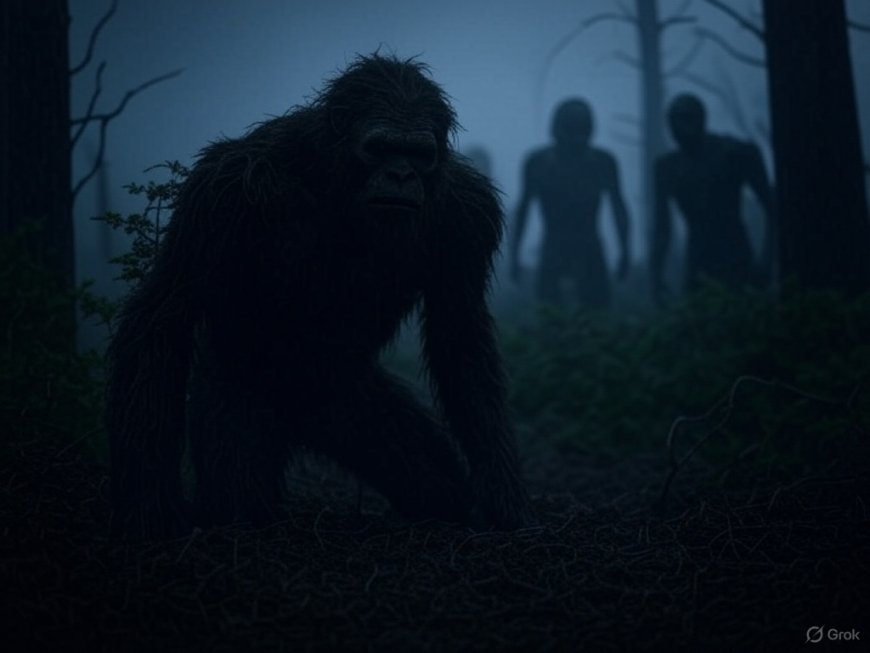Bigfoot: Hoax, Legend, or an Undiscovered Species?
Is Bigfoot real or just a hoax? Explore the evidence, hoaxes, and scientific theories behind the legendary creature.

For centuries, people have reported sightings of a massive, hairy, human-like creature lurking in remote forests across North America. Known as Bigfoot, this elusive being has captured the imagination of cryptozoologists, scientists, and conspiracy theorists alike.
Is Bigfoot real, or is it just an elaborate hoax fueled by folklore and wishful thinking? Could it be an undiscovered primate species, hidden deep in the wilderness? Let’s explore the evidence, theories, and skepticism surrounding one of the most enduring mysteries of modern times.
Origins: Where Did the Legend of Bigfoot Begin?
The legend of a giant, ape-like creature is not new. Indigenous tribes across North America have long-standing oral traditions describing large, humanoid beings living in the forests.
-
The Sts’ailes First Nation of British Columbia refers to a creature called Sasq’ets, which means “wild man of the woods.” This name later evolved into Sasquatch, a common term for Bigfoot.
-
The Lummi Nation of the Pacific Northwest speaks of Ts’emekwes, a large, hairy forest being with supernatural powers.
-
Indigenous groups from California to the Great Lakes have their own versions of the Bigfoot legend, suggesting that sightings are not just a modern phenomenon.
The modern Bigfoot craze began in 1958 when The Humboldt Times published a story about mysterious giant footprints found at a logging site in California. Years later, it was revealed that these tracks were faked by a man named Ray Wallace, but by then, the legend had already taken on a life of its own.
Bigfoot Sightings: A Global Phenomenon?
While Bigfoot is most commonly associated with North America, similar creatures have been reported worldwide:
-
Yeti (Himalayas) – Also known as the Abominable Snowman, this creature is believed to roam the snowy mountains of Nepal and Tibet.
-
Yowie (Australia) – Described as a tall, ape-like beast spotted in remote Australian forests.
-
Almas (Central Asia) – A human-like cryptid reported in Mongolia and Russia.
-
Orang Pendek (Sumatra, Indonesia) – A smaller, bipedal primate said to inhabit deep jungles.
These global similarities have led some researchers to theorize that Bigfoot could be a surviving relic of an ancient hominid species.
Further Reading: The Global Search for Bigfoot and Its Relatives
Physical Evidence: Does Bigfoot Leave a Trail?
1. Footprints
Bigfoot’s massive footprints are the most common physical evidence. Tracks measuring up to 24 inches long have been discovered in forests across the United States and Canada. Some have distinct dermal ridges (similar to human fingerprints), which cryptozoologists argue would be difficult to fake.
However, many of these tracks have been debunked as hoaxes, with people admitting to using carved wooden feet to create them.
Further Reading: The Science Behind Bigfoot Footprints
2. The Patterson-Gimlin Film (1967)
The most famous Bigfoot video ever recorded is the Patterson-Gimlin film, captured in Northern California in 1967. The footage shows a large, hairy, bipedal creature striding through a clearing.
Despite being analyzed extensively, no conclusive proof has confirmed whether the film is authentic or a hoax. Some experts argue that the creature’s muscle movement and stride suggest a real animal, while skeptics believe it was simply a man in a costume.
Further Reading: Is the Patterson-Gimlin Film the Best Evidence for Bigfoot?
3. DNA and Hair Samples
Over the years, alleged Bigfoot hair samples have been collected and analyzed. The results? Most turned out to belong to known animals such as bears, deer, or domestic animals.
A 2014 study published in the Proceedings of the Royal Society B examined over 30 DNA samples claimed to be from Bigfoot. The conclusion? None belonged to an unknown species.
Further Reading: DNA Analysis Debunks Bigfoot Evidence
Scientific Theories: Could Bigfoot Be Real?
While mainstream science remains skeptical, some researchers suggest Bigfoot could be:
1. A Surviving Gigantopithecus
Gigantopithecus was a giant ape species that lived in Asia over 300,000 years ago. Some theorists believe that a small population of Gigantopithecus could have migrated to North America via the Bering Land Bridge and evolved into modern-day Bigfoot.
The biggest issue? No Gigantopithecus fossils have been found in the Americas, and there’s no concrete evidence proving its survival past the Ice Age.
2. A Large, Undiscovered Primate
Some believe that Bigfoot could be a yet-to-be-discovered species of hominid that avoids human contact, much like other elusive animals (e.g., the Okapi, which was once thought to be a myth).
However, the lack of fossils, bones, or physical remains makes this theory unlikely.
3. A Case of Mistaken Identity
Many Bigfoot sightings could be misidentified animals. Bears standing on their hind legs, large orangutans or chimpanzees released from captivity, or even people in costumes could explain many encounters.
Further Reading: How Scientists Explain Bigfoot Sightings
Hoaxes and Exaggerations: The Problem With Bigfoot Research
The Bigfoot community is filled with fraudulent evidence, staged photos, and fabricated eyewitness accounts. Some of the most famous Bigfoot cases have been proven to be outright hoaxes.
-
In 2008, two men from Georgia claimed to have a dead Bigfoot corpse. It was later revealed to be a rubber costume stuffed with roadkill.
-
In 2012, a Montana man named Randy Lee Tenley was killed while trying to fake a Bigfoot sighting—he was hit by a car while wearing a Ghillie suit.
These cases have damaged Bigfoot’s credibility, making it harder for serious researchers to be taken seriously.
Further Reading: The Most Infamous Bigfoot Hoaxes
Conclusion: Bigfoot—Fact, Fiction, or Folklore?
While Bigfoot remains one of the most famous cryptids in history, there is no concrete scientific evidence proving its existence. Most sightings can be explained as hoaxes, misidentifications, or folklore passed down through generations.
That said, the mystery is far from over. With advances in DNA testing, thermal imaging, and deep-forest exploration, new discoveries could one day provide a definitive answer. Until then, Bigfoot remains a legend—one that continues to captivate the world.
Related Reads and References
What's Your Reaction?
 Like
0
Like
0
 Dislike
0
Dislike
0
 Love
0
Love
0
 Funny
0
Funny
0
 Angry
0
Angry
0
 Sad
0
Sad
0
 Wow
0
Wow
0



















































